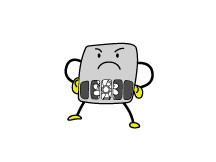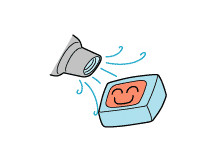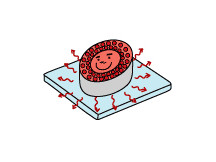Skillful Use of LED Lights
The following information will help you use LED lighting more effectively.
The service life of LED Lights is shorter at high temperatures
LEDs will radiate less light when they become hotter. Heat will also increase the rate at which LEDs deteriorate. Details depends on the specific Light Unit that is used, as well as the application environment.
- Red LEDs are particularly sensitive and will radiate 1% less light for every 1°C rise in temperature. The normal radiant quantity is restored when the LEDs cool down again.
- If the LEDs are used at high temperatures for an extended period of time, however, they will deteriorate and the radiant quantity will decline. In this case, the normal radiant quantity is not restored when the LEDs cool down again.
How to prevent LED deterioration and reduction in radiation output due to heat generated by LEDs
Turn Down the Light Intensity Control Knob on the Control Unit as Far as Possible.
Turning down the light intensity control knob will reduce the current flowing to the Light Unit, which will reduce heat generation and help prevent the LEDs from deteriorating. As a guideline, we recommend that you set the light intensity control knob to about 50% and then turn up the light intensity control knob gradually as the radiant quantity of the Light Unit decreases.
Install a Fan or Otherwise Increase Air Flow to Dissipate Heat.

install a fan

provide air flow

install on a bracket with good heat conductivity
Turn ON the Light Unit Only When Taking Images.
LED lighting readily withstand being turned ON and OFF. Lighting the Light Unit only when taking images using a strobe or external signal input will reduce heat generation, provide a more stable radiant quantity, and increase the life of the Light Unit.

